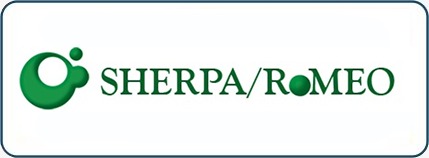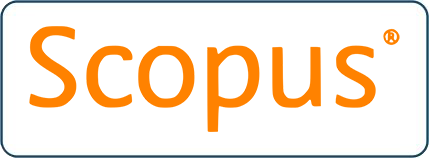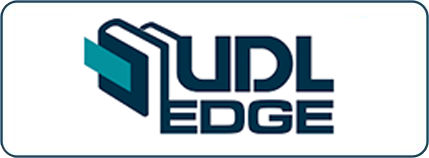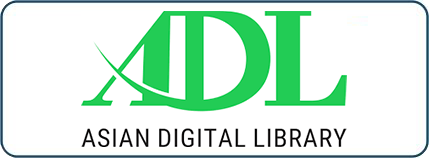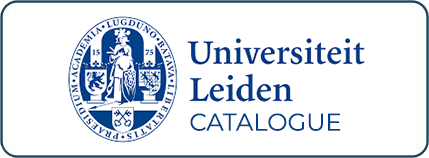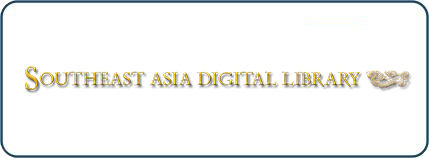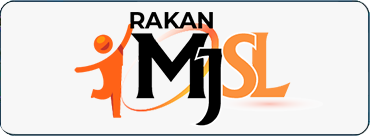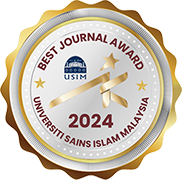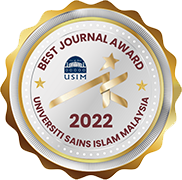CASH WAQF LINKED DINFRA (CWL-FRA) AS WAQF INNOVATION MODEL INTEGRATED WITH INFRASTRUCTURE INSTRUMENT FOR NATIONAL ECONOMIC RECOVERY AND SUSTAINABILITY
DOI:
https://doi.org/10.33102/mjsl.vol11no2.422Keywords:
CWL-FRA, Cash Waqf, DINFRA, Economy RecoveryAbstract
Cash waqf is a form of contemporary waqf that has great potential in the modern world. In Indonesia, despite its potential of 180 trillion per year, cash waqf collection, management, and distribution are not optimal. Nonetheless, the infrastructure sector in Indonesia faces obstacles, particularly in terms of funding. The innovation of the CWLFRA (Cash Waqf Linked DINFRA) model is, therefore, a solution to these two issues, as the proposed model is the result of an integration between efforts to optimize cash waqf and infrastructure financing via the Infrastructure Investment Fund (DINFRA). In this CWL-FRA innovation, waqf funds will be allocated to the mauquf 'alaih from the profits of infrastructure investment funds, which will become a source of long-term usable assets. As a result, the purpose of this academic paper is to develop a model capable of bolstering the ecosystem of Islamic social financial institutions and maximizing the potential achievement of cash waqf in Indonesia as a means of implementing sustainable finance and an effective instrument in reviving national economy through infrastructure development. In addition, this study seeks to determine the viability of the potential for developing the productivity of cash waqf in an effort to increase the effectiveness of achieving cash waqf to support economic sustainability with infrastructure potential. Nine respondents representing academicians and expert practitioners from both the waqf and infrastructure sectors filled out questionnaires to collect data. According to the results of the Delphi test, all respondents believed that there was a relationship between the Strengths, Weaknesses, Opportunities and Threats (SWOT) indicators, indicating that this model is implementable. Moreover, based on the level of agreement of respondents, this model has the potential to contribute positively to national economic recovery, become a sustainable source of social funds, optimize the potential of waqf in Indonesia, strengthen the ecosystem of waqf social finance institutions, and improve the quality of management and maintenance of Indonesia's infrastructure. These findings demonstrate that integrating financial waqf with existing public infrastructure could positively affect the sustainability of national economic development. The novel aspect of this paper is the proposed cash waqf management system, which can serve as a useful reference for policymakers and waqf institutions seeking to develop a more effective waqf concept in terms of collection, administration, and distribution. Consequently, this study aims to demonstrate the potential for cash waqf, which can be integrated with DINFRA's product through the innovation of the CWL-FRA model, to become an investment instrument and offer a diversity of options to the waqf community.
Downloads
References
A’yuni, D. S. (2018). Peran wakaf terhadap kesejahteraan masyarakat. Al-'Adalah: Jurnal Syariah dan Hukum Islam, 3(2), 120-130.
Anindhita, A. E. (2021). Cash Waqf Linked Sukuk Sebagai Solusi Pemulihan Ekonomi Pasca COVID-19. Proceedings Ihtifaz: Islamic Economics, Finance, and Banking.
Astutik, Y. (2021). Potensi keuangan sosial islam (zakat, infaq, sholaqoh, wakaf) mencapai 500 triliun. Jakarta: CNBC Indonesia.
Atmaja, H. K., & Mahalli, K. (2015). Pengaruh peningkatan infrastruktur terhadap pertumbuhan ekonomi di Kota Sibolga. Jurnal Ekonomi dan Keuangan, 3(4), 14847.
Fatwa DSN-MUI Nomor: 80/DSN- MUI/III/2011.
Fatwa tentang wakaf uang, Majelis Ulama Indonesia, Ditetapkan Tanggal 11 Mei 2002.
Fauziah, N. N., Rabiah, E., Engku, A., & Bacha, A. M. (2021). An analysis of cash waqf linked sukuk for socially impactful sustainable projects in Indonesia. Journal of Islamic Finance, 10(1), 001–010.
Hartanto, S., & Sup, D. F. A. (2021). Konsep Sukuk Wakaf dalam Perspektif Fatwa DSN-MUI. Muslim Heritage, 6(1), 201-218.
Hazami, B. (2016). Peran dan aplikasi wakaf dalam mewujudkan kesejahteraan umat di Indonesia. Analisis: Jurnal Studi Keislaman, 16(1), 173-204.
Idris, M. (2020, August 6). Apa saja yang terjadi saat resesi ekonomi indonesia tahun 1998?. KOMPAS. Retrieved Mei 11, 2022 from https://money.kompas.com/read/2020/08/06/082004526/apa-saja-yang-terjadi-saat-resesi-ekonomi-indonesia-tahun-1998?page=all
Intan Suswita, Darwin Damanik, & Pawer Darasa Panjaitan. (2020). Pengaruh infrastruktur terhadap pertumbuhan ekonomi di Kabupaten Simalungun. Jurnal Ekuilnomi, 2(1), 1–11. https://doi.org/10.36985/ekuilnomi.v2i1.346
Jamal, M. (2019). Analisis Pelaksanaan Wakaf di Kuwait. Ziswaf, 6(1), 1-18.
Kacaribu, F. (2020). Media briefing: program pemulihan ekonomi nasional. Kementerian Keuangan. Facebook. https://m.facebook.com/KemenkeuRI/videos/media-briefing-pelaksanaan-program-pemulihan-ekonomi-nasional1105/2680695878857113/?__so__=permalink&__rv__=related_videos&locale=ms_MY
Kahf, M. (2021). Waqf: A Quick Overview. available at: http://monzer.kahf.com/papers/english/WAQF_A_QUICK_OVERVIEW.pdf
Kasdi, A. (2019). Fiqih wakaf dari wakaf klasik hingga wakaf produktif. Yogyakarta: Idea Press.
Kasnelly, F. A. J. S. (2020). Meningkatnya angka pengangguran di tengah pandemi (COVID-19). Al-Mizan: Jurnal Ekonomi Syariah, 3(1), 45-60.
Kemendagri. (2022, February 24). Kementerian Dalam Negeri Republik Indonesia. Retrieved Mei 11, 2022 from https://dukcapil.kemendagri.go.id/berita/baca/1032/273-juta-penduduk-indonesia-terupdate-versi-kemendagri
Kemenkeu (Kementerian Keuwangan), (2020). Peraturan pemerintah tentang pelaksanaan program pemulihan ekonomi nasional dalam rangka mendukung keuangan negara pasca pandemi COVID -19. Jakarta: Peraturan Pemerintah Indonesia. https://peraturan.bpk.go.id/Details/142743/pp-no-43-tahun-2020#:~:text=PP%20No.%2023%20Tahun%202020,Sistem%20Keuangan%20serta%20Penyelamatan%20Ekonomi
Maksum, M., & Rahman, M. F. (2021). Hukum dan pengelolaan wakaf uang untuk penanggulangan bencana pandemi COVID-19: Perbandingan badan wakaf Indonesia dan Yayasan Waqaf Malaysia (Master's thesis, Fakultas Syariah dan Hukum, UIN Syarif Hidayatullah Jakarta).
Maulidizen, A. (2020). Analysis of Islamic Consumption ethics critical toward causes of Corona Virus in Wuhan, China. Al-Banjari: Jurnal Ilmiah Ilmu-Ilmu Keislaman, 19(2), 197-215.
Mauluddin, M.I. & Rahman, A.A. (2018). Cash waqf from the perspective of Majelis Ulama Indonesia (MUI) and the scholars of Acheh. In Rahman, A.A. (Ed.), New Developments in Islamic Economics, Emerald Publishing Limited.
Muchtar, A. H., Maulidizen, A., & Safaah, A. (2022). Am and khaṣ linguistic method concept and implementation in Islamic Law determination. Al Mashalih-Journal of Islamic Law, 3(1), 1-26.
Otoritas Jasa Keuangan. (2016). Mengenal Pasar Modal Syariah. Jakarta: Direktorat Pasar Modal Syariah.
Otoritas Jasa Keuangan. (2017). Peraturan otoritas jasa keuangan nomor 52 /pojk.04/2017 tentang dana investasi infrastruktur berbentuk kontrak investasi kolektif. Dewan Standar Akuntansi Keuangan, 1-7.
Panjaitan, H. A. M., Mulatsih, S., & Rindayati, W. (2019). Analisis dampak pembangunan infrastruktur terhadap pertumbuhan ekonomi inklusif Provinsi Sumatera Utara. Jurnal Ekonomi dan Kebijakan Pembangunan, 8(1), 43-61.
Peraturan Badan Wakaf Indonesia No. 1 Tahun 2009 tentang Pedoman Pengelolaan dan Pengembangan Harta Benda Wakaf Bergerak Berupa Uang.
Peraturan Badan Wakaf Indonesia No. 4 Tahun 2010 tentang Pedoman Pengelolaan dan Pengembangan Harta Benda Wakaf.
Peraturan Otoritas Jasa Keuangan Nomor 52/POJK.04/2017 Tentang Dana Investasi Infrastruktur (DINFRA).
Prakoso, J. P. (2020, December 17). Survei LIPI: Lebih dari 70 Persen UMKM alami penurunan omzet. Bisnis.Com. Retrieved June 20, 2022 from https://ekonomi.bisnis.com/read/20201217/9/1332480/survei-lipi-lebih-dari-70-persen-umkm-alami-penurunan-omzet
Pratama, A. M. (2021, July 13). Ini dampak ekonomi jika PPKM darurat diperpanjang hingga 6 Minggu. KOMPAS.com. Retrieved June 20, 2022 from https://money.kompas.com/read/2021/07/13/111500426/ini-dampak-ekonomi-jika-ppkm-darurat-diperpanjang-hingga-6-minggu
Putri, C. A. (2022, March 30). Utang pemerintah RI tembus Rp 7.000 triliun. CNBC Indonesia. Retrieved June 20, 2022 from https://www.cnbcindonesia.com/news/20220330134911-4-327261/utang-pemerintah-ri-tembus-rp-7000-triliun
Rahardjo, V. (23rd January, 2021). Gerakan wakaf uang nasional (GNWU) sebagai momentum kebangkitan wakaf uang [Paper Presentation]. Webinar Nasional Wakaf Uang, Komite Nasional Ekonomi dan Keuangan Syariah (KNEKS). https://www.bwi.go.id/wp-content/uploads/2021/01/Webinar-Nasional-Wakaf-Uang-v2.pdf
Rahman Ghazaly, Abdul. (2010). Fiqh muamalat. Jakarta: Kencana.
Ridwan, M. (2012). Nazhir profesional kunci kesuksesan wakaf produktif. Muqtasid: Jurnal Ekonomi Dan Perbankan Syariah, 3(1), 91-109.
Rusydiana AS, Hidayat Y, Widiastuti T, Rahayu SS. (2021). Cash waqf for developing Islamic economy: Case study in Indonesia. Journal Al Uqud, 5(1), 43-59.
Rusydiana, A., & Rahayu, S. S. (2019). Bagaimana strategi pengembangan wakaf tunai di Indonesia. Jurnal Ekonomi Dan Bisnis Islam (Journal of Islamic Economics and Business), 5(1), 15-33.
Said, S., & Amiruddin, A. M. A. (2019). Wakaf Tunai dan Pemberdayaan Ekonomi Masyarakat. Al-Mashrafiyah: Jurnal Ekonomi, Keuangan, dan Perbankan Syariah, 3(1), 43-55.
Saputra, D. (2022, April 14). Jokowi singgung masalah pembangunan infrastruktur, apa saja?. Bisnis.com. https://ekonomi.bisnis.com/read/20220414/45/1523034/jokowi-singgung-masalah-pembangunan-infrastruktur-apa-saja
Songgirin, A., & Maulidizen, A. (2022). Pemberdayaan zakat ke sektor pertanian sebagai strategi ketahanan pangan keluarga. Sosio Informa: Kajian Permasalahan Sosial dan Usaha Kesejahteraan Sosial, 8(3), 214-228
Syauqi, A. (2020). Jalan Panjang COVID-19 (sebuah refleksi dikala wabah merajalela berdampak pada perekonomian). Jurnal Keuangan dan Perbankan Syariah, 1(1), 1-19.
Tanjung, H., & Windiarto, A. (2021). Role of cash waqf linked sukuk in economic development and international trade. Signifikan: Jurnal Ilmu Ekonomi, 10(2), 275–290. https://doi.org/10.15408/sjie.v10i2.20493
Tika Widiastuti, A. S. (2020, December 9). Hambatan dan strategi dalam mengembangkan industri halal: bukti dari Indonesia. UNAIR News. Retrieved June 25, 2022, from http://news.unair.ac.id/2020/12/09/hambatan-dan-strategi-dalam-mengembangkan-industri-halal-bukti-dari-indonesia/
Ubaidillah, U., Masyhuri, M., & Wahyuni, N. (2021). Cash waqf linked sukuk (CWLS): An alternative instrument for infrastructure financing. Indonesian Interdisciplinary Journal of Sharia Economics (IIJSE), 4(1), 35-49.
Undang-undang No. 41 Tahun 2004 Tentang Wakaf.
Wulandari, S., Effendi, J., & Saptono, I. T. (2019). Pemilihan nazhir dalam optimalisasi pengelolaan wakaf uang. Jurnal Aplikasi Bisnis dan Manajemen (JABM), 5(2), 295-295.
Yunita, P. (2020). Cash waqf linked sukuk (CWLS) model: For Indonesia sustainable food security. Al-Awqaf: Jurnal Wakaf dan Ekonomi Islam, 13(1), 59-72. https://doi.org/10.47411/al-awqaf.v13i1.96
Yusuf H. (2017). Pengelolaan dan Pemanfaatan Wakaf Produktif dalam Pemberdayaan Ekonomi Masyarakat Pada Pesantren Al Mubarak Kecamatan Sibulue Kabupaten Bone. Thesis. Makassar (ID), UIN Alauddin.
Zamzami, A. Y. (2022). Ekonomi Indonesia Di Kala Pandemi COVID-19. Retizen Republika.
Downloads
Published
Issue
Section
Categories
License
Copyright (c) 2023 Rusdiana Priatna Wijaya

This work is licensed under a Creative Commons Attribution-NonCommercial 4.0 International License.











